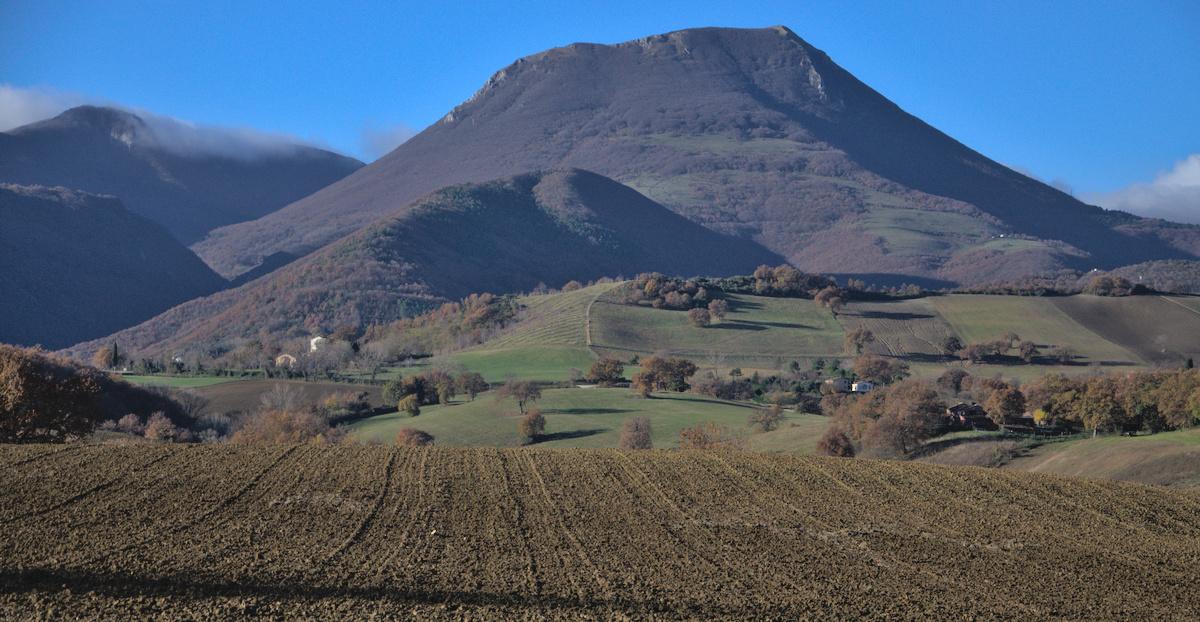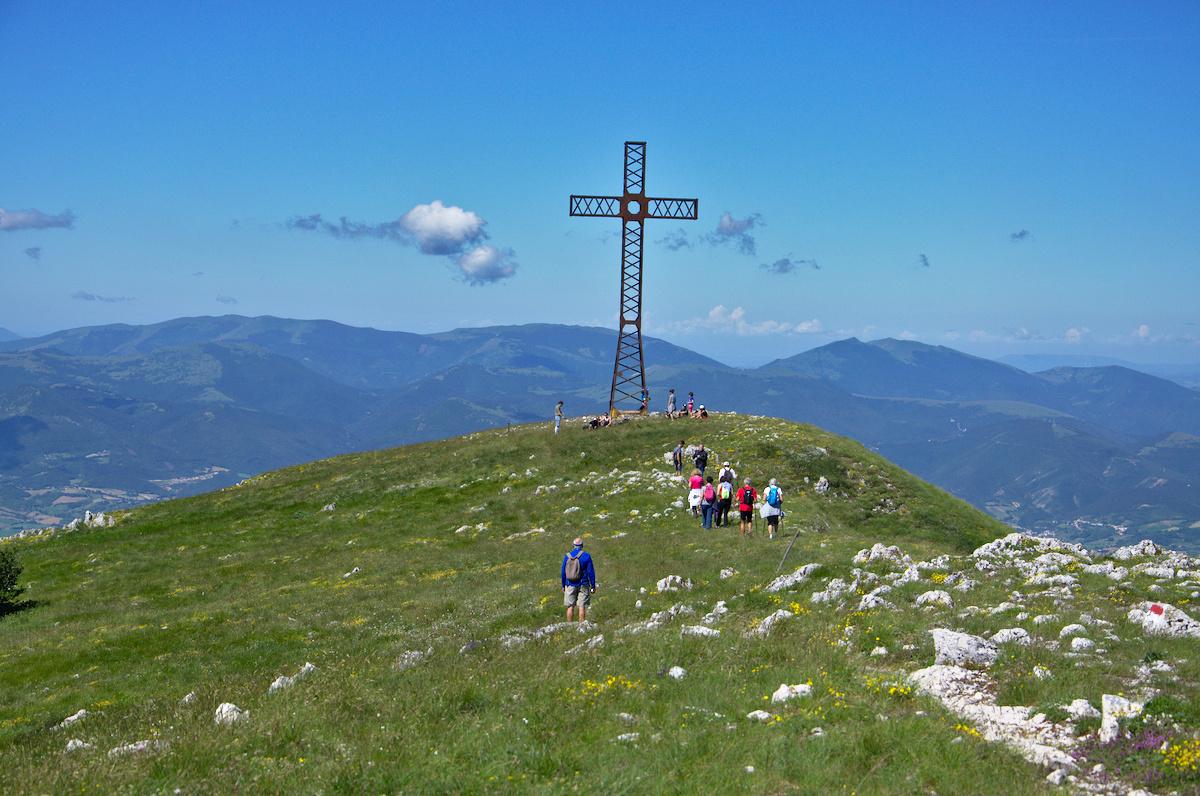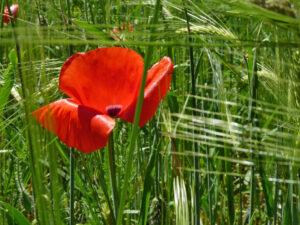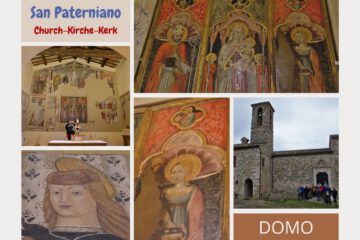I must say, as an Italian, it really annoys me that such an important and meaningful song for the Italian history has been brutalized in so many ways. I am happy that my co-blogger Elke brought this topic up, and we now have a chance to talk about it, and do it justice (with a hint of Le Marche).
Una mattina mi son svegliato,
o bella, ciao! bella, ciao! bella, ciao, ciao, ciao!
Una mattina mi son svegliato,
e ho trovato l’invasor.
O partigiano, portami via,
o bella, ciao! bella, ciao! bella, ciao, ciao, ciao!
O partigiano, portami via,
ché mi sento di morir.
E se io muoio da partigiano,
o bella, ciao! bella, ciao! bella, ciao, ciao, ciao!
E se io muoio da partigiano,
tu mi devi seppellir.
E seppellire lassù in montagna,
o bella, ciao! bella, ciao! bella, ciao, ciao, ciao!
E seppellire lassù in montagna,
sotto l’ombra di un bel fior.
Tutte le genti che passeranno,
o bella, ciao! bella, ciao! bella, ciao, ciao, ciao!
Tutte le genti che passeranno,
Mi diranno «Che bel fior!»
«È questo il fiore del partigiano»,
o bella, ciao! bella, ciao! bella, ciao, ciao, ciao!
«È questo il fiore del partigiano,
morto per la libertà!»
One morning I awakened
Oh Goodbye beautiful, Goodbye beautiful, Goodbye beautiful! Bye! Bye!
One morning I awakened
And I found the invaderOh partisan carry me away
Oh Goodbye beautiful, Goodbye beautiful, Goodbye beautiful! Bye! Bye!
Oh partisan carry me away
Because I feel death approachingAnd if I die as a partisan
(And if I die on the mountain)
Oh Goodbye beautiful, Goodbye beautiful, Goodbye beautiful! Bye! Bye!
And if I die as a partisan
(And if I die on the mountain)
Then you must bury meBury me up in the mountain
(And you have to bury me)
Oh Goodbye beautiful, Goodbye beautiful, Goodbye beautiful! Bye! Bye!
Bury me up in the mountain
(And you have to bury me)
Under the shade of a beautiful flowerAnd the people who shall pass
(And all those who shall pass)
Oh Goodbye beautiful, Goodbye beautiful, Goodbye beautiful! Bye! Bye!
And the people who shall pass
(And all those who shall pass)
Will tell me: “what a beautiful flower”
(And they will say: “what a beautiful flower”)This is the flower of the partisan
(And this is the flower of the partisan)
Oh Goodbye beautiful, Goodbye beautiful, Goodbye beautiful!
Bye! Bye!
This is the flower of the partisan(And this is the flower of the partisan)
Who died for freedom
Last year, the historian Ruggero Giacomini found evidence in the archives of the Marche region that the song was probably first sung in the Marchigian area around Monte San Vicino and only from there, presumably by members of the brotherly Brigata Maiella, was carried to Abruzzo.



As evidence, he cites the Russian Lydia Stocks, who escaped from an internment camp near Macerata in 1943 and temporarily joined the partisans at Monte San Vicino. Giacomini found in the archives a letter she wrote shortly after the war to Amato Vittorio Tiraboschi, former commander of her Garibaldi Marche Brigade. In it she reminded of the Bella Ciao that was sung together at the time. And as early as 1945, the pastor of the nearby town of Poggio San Vicino, where the Germans carried out a terrible massacre, wrote that even the children were already singing Bella Ciao in the spring of 1944.
What is the beautiful flower mentioned in the Bella Ciao text?
In the United States, Britain and many parts of the world, the poppy is seen as a symbol of war dead, based on a poem by Canadian General McCrae that describes the poppies among the crosses and graves of the fallen of World War I in Flanders, one of the bloodiest battles of this war.
In Italy, this symbolism was not used at first. Until the singer Fabrizio di André released the anti-war song “La guerra di Piero” (The War of Piero) in 1966, which begins with the lines:
Dormi sepolto in un campo di grano
Non è la rosa, non è il tulipano
Che ti fan veglia dall’ombra dei fossi
Ma son mille papaveri rossi
in English:
Lying down buried in a field of rye
‘t’s neither the rose’s nor the tulip’s eye
Since then, the following applies in Italy: the poppy (Italian papavero) is the flower of the Partis.
Whatever historians discover about the origins of Bella Ciao, we will always think of Bella Ciao and the partisans of Monte San Vicino and the many victims of WWII when poppies are omnipresent in Marche in late spring.



Elke did a great job on researching the information from a number of articles, among others, which we would like to thank and mention here: Cronache-Ancona from April 6th, 2021, Il Resto del Carlino from April 7th, 2021, Discorsivo from April 25th, 2021 … and of course Wikipedia and Wikimedia Commons. ..





0 Comments